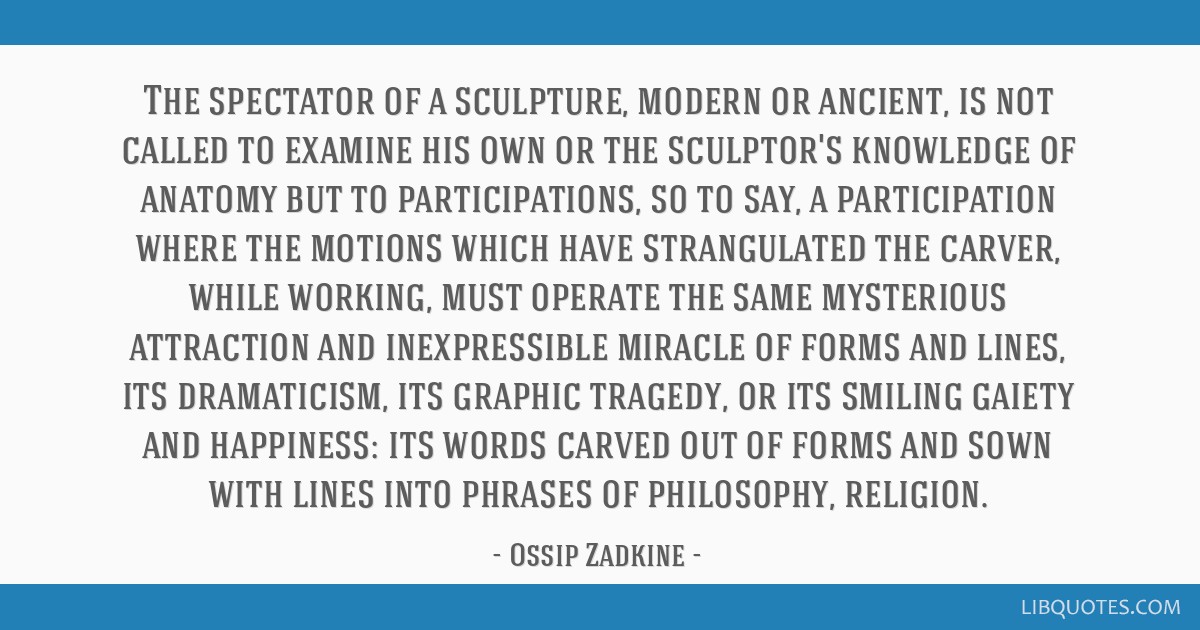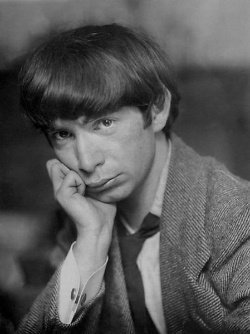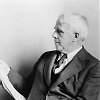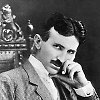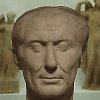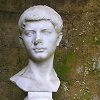The spectator of a sculpture, modern or ancient, is not called to examine his own or the sculptor's knowledge of anatomy but to participations, so to say, a participation where the motions which have strangulated the carver, while working, must operate the same mysterious attraction and inexpressible miracle of forms and lines, its dramaticism, its graphic tragedy, or its smiling gaiety and happiness: its words carved out of forms and sown with lines into phrases of philosophy, religion.
Plastic Language, Ossip Zadkine
